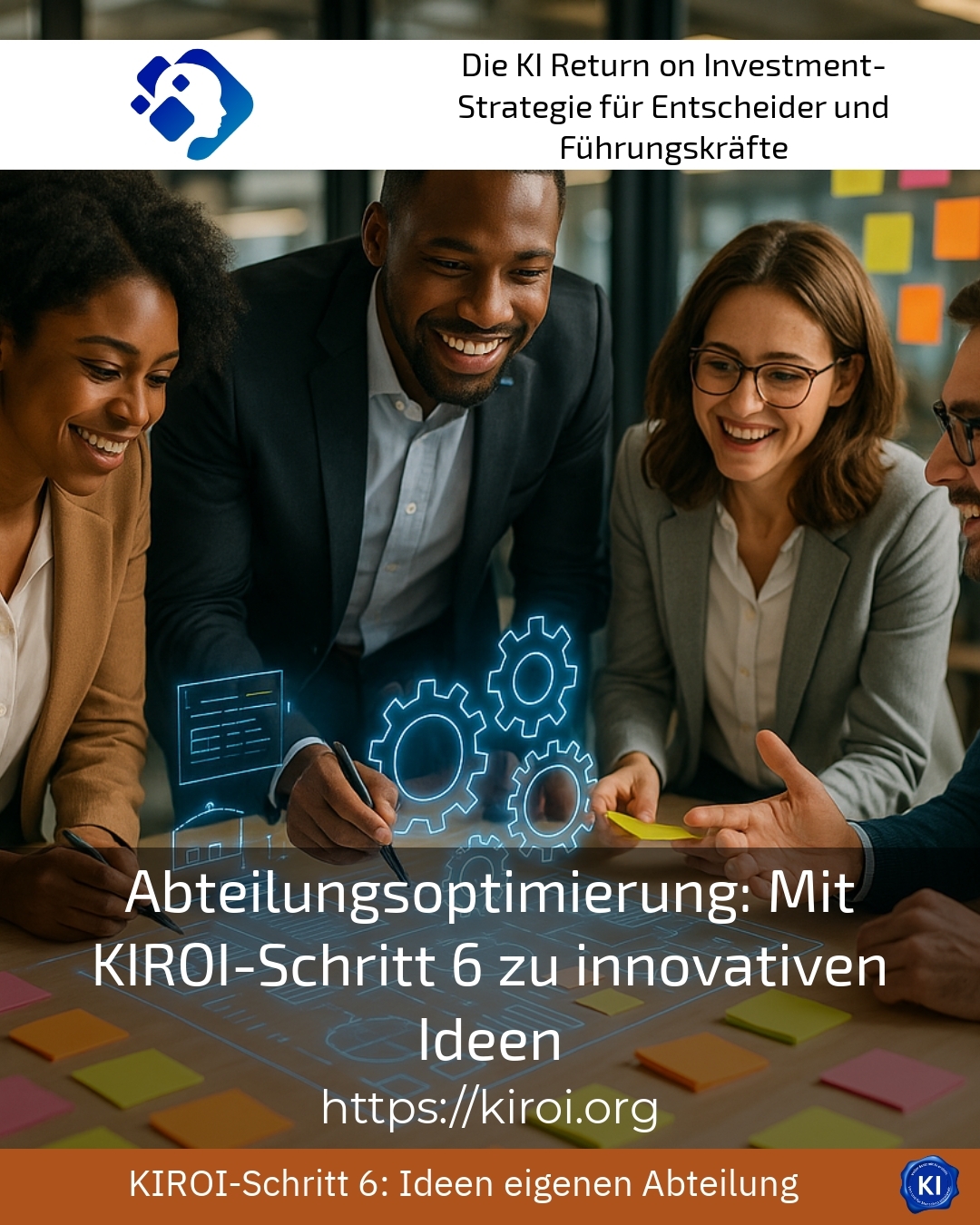Many managers and teams are asking themselves how they can sustainably improve their work processes, especially when markets are changing rapidly. Departmental optimisation is the keyword here and is becoming increasingly important. The aim is not only to make existing processes more efficient, but also to specifically promote innovation and strengthen teamwork. Approaches such as KIROI Step 6 in particular open up new ways to develop the creative potential of employees and thus ensure long-term success. Transruption coaching helps companies to master these challenges together.
Understanding departmental optimisation: What's behind it?
Departmental optimisation means systematically questioning working methods, structures and processes within a unit and developing them further in a targeted manner. It is not enough to simply speed up old processes. Rather, it is important to establish new ways of thinking that enable innovation. Clients often report that although traditional optimisation methods help in the short term, they do not sufficiently support change. This is precisely where KIROI Step 6 comes in, as it encourages teams to develop creative solutions and implement them directly.
An example from production: a team uses KIROI Step 6 to identify weak points in material planning. Instead of just monitoring stock levels, the employees develop a tool for automatically triggering orders based on real-time data. This creates a seamless supply and avoids bottlenecks.
In turn, the HR department is working together on how employees can be more closely involved. New formats for feedback and further training are created that are customised to the needs of the workforce. Such measures not only improve collaboration, but also boost motivation.
Innovative approaches can also be implemented in sales through targeted departmental optimisation. Instead of running standardised advertising campaigns, the team works together to develop new formats, such as interactive webinars or personalised offers that respond directly to customer wishes and thus increase customer loyalty[4].
Set innovative impulses with KIROI Step 6
KIROI Step 6 is a structured approach to developing departments as think tanks. The focus is on the systematic collection, evaluation and prioritisation of ideas. The result is not theoretical proposals, but a concrete catalogue of measures that can be implemented directly. The method encourages personal responsibility and gives teams a clear framework for becoming creative[2].
A practical example: A company uses KIROI Step 6 in the IT department to improve collaboration with other departments. Digital tools are jointly developed to simplify coordination between development, support and users. The teams themselves decide which innovations are prioritised.
In logistics, a group is using this method to develop a system for automated route planning that not only saves time but also improves the environmental footprint. The employees contribute their experience and actively shape the process.
Teams also benefit from this approach in quality management. Instead of just documenting errors, they develop preventative measures to recognise and eliminate sources of error at an early stage. This increases the quality of products and services in the long term.
Practical tips for implementing departmental optimisation
The successful application of KIROI Step 6 begins with an open and appreciative team culture. It is important that everyone involved can contribute their ideas without judgement or pressure. Transruption coaching supports companies in developing this attitude and firmly anchoring it in everyday life.
Regular workshops promote dialogue and ensure that new approaches do not come to nothing. It helps to define specific goals and make progress transparent. The best results are achieved when teams learn to take responsibility and shape change themselves.
Another success factor is the use of digital tools for idea management and implementation planning. This keeps the process clear and comprehensible. Small, quickly realisable measures ensure a quick sense of achievement and motivate the team to keep going.
And last but not least: Evaluate the optimisation process regularly, adjust targets and measures and obtain feedback from everyone involved. This is the only way to ensure that departmental optimisation remains a living process that actually drives innovation.
My analysis
Departmental optimisation is not a one-off project, but a continuous process that sustainably increases the innovative strength and efficiency of teams. Approaches such as KIROI Step 6 create structures that promote creative ideas and facilitate their implementation. Companies that value an open feedback culture and actively involve their teams can quickly adapt to new requirements and remain successful in the long term.
Further links from the text above:
Department optimisation: With KIROI step 6 to ... [2]
Department optimisation: With KIROI step 6 to innovative ... [4]
Process optimisation: definition, objectives, phases, procedure [1]
For more information and if you have any questions, please contact Contact us or read more blog posts on the topic Artificial intelligence here.















